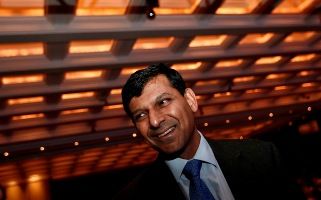A rate cut by RBI would have been a largely signalling act, which was of little value in today’s circumstances.
 As widely expected, even though it wasn’t what many had hoped for, the Reserve Bank of India on Tuesday maintained the status quo on the repo rate in its fifth bi-monthly policy review statement of the current year.
As widely expected, even though it wasn’t what many had hoped for, the Reserve Bank of India on Tuesday maintained the status quo on the repo rate in its fifth bi-monthly policy review statement of the current year.
Business Standard had endorsed this position and must, therefore, commend Governor Raghuram Rajan for sticking to his stance in the face of enormous pressure from a variety of stakeholders, including the finance ministry.
In his statement, the governor provided three main reasons for his stance.
First, even as inflation has eased considerably, a fact that the statement also acknowledges, there is a non-negligible risk of the headline rate rising again over the next few months.
The RBI expects the rate to increase in December, due to a base effect and thereafter to be vulnerable to food price pressures because of a deficient northeast monsoon so far, following a similarly inadequate southwest monsoon.
Second, even as it appears that household inflationary expectations are declining, the most recent survey still puts them in double digits.
A primary objective of monetary policy is to anchor expectations at low and stable levels. Double-digit expectations do not meet those criteria.
Third, looking at it from the perspective of the benefits that a rate cut may have delivered, it is quite evident that banks are flush with liquidity and unwilling to lend to businesses.
Credit growth is extremely sluggish.
In these circumstances, it is highly unlikely that marginally lower policy rates would significantly impact credit flows, without which there cannot be any stimulus to growth.
A rate cut would have been a largely signalling act, which was of little value in today’s circumstances.
All in all, the judgement clearly is that the appropriate time for rate cuts will be when there is more visibility on a sustainable downward trajectory for inflation.
In short, the statement hinted quite strongly that a rate cut was now only a matter of time.
The question is: when will it happen and what might derail things? There is now a build-up of expectations about a cut in the policy review announcement after the Union Budget is presented.
The first post-Budget announcement will be on March 31, 2015.
Some of the risks to this scenario come from the Budget itself.
So far this year, growth in tax revenues is significantly lower than what was estimated in the Budget.
Consequently, even with the windfall reduction in the subsidy bill as a result of lower oil prices, the fiscal deficit may still fall short of the target.
Credible fiscal consolidation has been a consistent pre-condition to easing the monetary policy stance as far as the RBI is concerned.
From this perspective, the next move in the monetary policy game is clearly with the government.
If it wants to induce the RBI to cut rates, it must reciprocate with a clear set of actions to keep the deficit at the level projected by the Budget.
Looking beyond the immediate horizon, it must push firmly ahead with the goods and services tax, disinvestment and expenditure management in order to address the deficit problem on a permanent basis.
And, amidst all this, it must find the resources to enhance investment in infrastructure.
The finance ministry is as much of a factor in monetary policy as the RBI.
Image: RBI Governor Raghuram Rajan. Photographs: Adnan Abidi/Reuters










